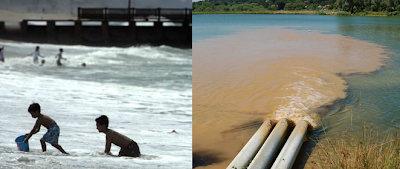Main Sources of Water Pollution
Water is one of the most important environmental resource essential for the survival of life and the important element in the Bio shpere It helps in circulation, movement and cycling of nutrients which is found in various phases and storage such as
I) Liquid phase - Ocean, Seas, Lakes and Rivers.
II) Solid phase - Glaciers , Icecaps, Icesheets
It is Pointed out that only one percent of the total amount of water is available from various sources to biotech life including man.
Ground water is the largest source as improvises the largest amount of water which is being used at every walk of life water. Water has multi uses i.e drinking water, water for industries, irrigation, power generation, navigation and even disposal of sewage 'Rivers are our life lines' this statement itself suggest its importance.River vallie: are the cradles of the old civilization where it grows It is only because of availability of water. In India 80% of its population lies in 15 river vallies Use of water in percentage is given below for Indian contest Still most of the urban centers and rural areas are facing drinking water problem. even after 50 years of Independence lndians are not fortunate to obtain pure and safe drinking water. Water
problem is one of the most important crises on global as well as national level. More than 60% of Indians do not have clean safe and pure water to drink.
Read More
Water is one of the most important environmental resource essential for the survival of life and the important element in the Bio shpere It helps in circulation, movement and cycling of nutrients which is found in various phases and storage such as
I) Liquid phase - Ocean, Seas, Lakes and Rivers.
II) Solid phase - Glaciers , Icecaps, Icesheets
It is Pointed out that only one percent of the total amount of water is available from various sources to biotech life including man.
problem is one of the most important crises on global as well as national level. More than 60% of Indians do not have clean safe and pure water to drink.
Read More





























